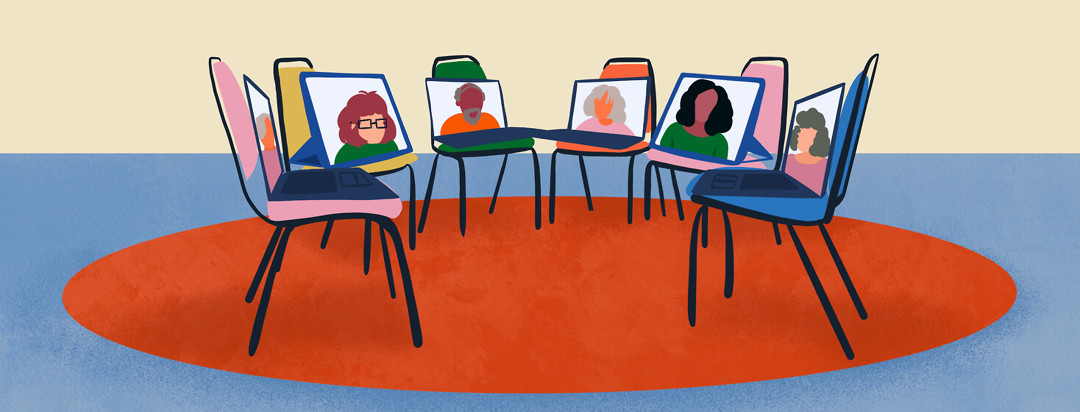The 2020 Support Group Drought: To Meet or Not to Meet
Our local Parkinson's support group has been on my mind more than usual of late. We have not been meeting as a large group due to social distancing guidelines and members’ health risks during these current challenging times. The opportunity to offer social and emotional support in person has been sorely missed while we are apart, especially for the persons living alone and staying at home except for necessary outings to a doctor or grocery store. Lately, I have been calling this the era of “support group drought.”
Sending newsletters to Parkinson's support groups
Since our last in-person meeting was in March, I decided to send out newsletters this summer to help everyone stay in touch. That was fine while we thought it likely that our group meetings would resume in September. In-person meetings looked less probable as the summer progressed.
I learned recently that the facility where we meet has made the decision that no outside groups will be permitted to hold meetings there until next year. Our new reality is that January may be the first month up for consideration but there is no guarantee.
Human interaction for people with Parkinson's
Two members passed away in recent months and while we grieve with the surviving spouses, it is frustrating not to be able to support them through our group setting.
After all, humans thrive from contact with one another and that includes not just physical presence, but physical touches such as a simple handshake, a pat on the shoulder, or the embrace of a hug. Touch is especially critical when grieving, and that drove me to find out if and how our support group might somehow get together.
In a city of 123,000, our support group directory lists 113 members. Approximately 38 members attend our monthly meetings semi-regularly with 28 members attending consistently. For years the monthly meeting information and other news have been shared via snail mail or phone calls. Over the course of the last year, 43 members agreed to begin receiving emails. Why is that important?
Using technology to host virtual support groups: Friend or Foe?
I have been wondering how to get the group together sooner rather than later. The fact that it is not likely we will meet in person until January at the earliest made me think of presenting other options. Since some members receive emails, they might be willing to access and use remote meeting services like those provided by Zoom. Correct? And, wouldn’t a virtual meeting be better than no meeting at all?
I sent a short survey in the most recent newsletter asking members to select one or more of the following options.
Virtual Meetings
One option offered was to hold virtual meetings. Members need access to a computer, smart tablet, or smartphone. I let them know that Zoom is available at no expense to them and set-up help would be offered as much as possible.
Case in point: Six group members who previously met one day every week or two for lunch switched to Zoom meetings over the summer with good results. They especially wanted to stay in touch with two of their small group members who underwent deep brain stimulation surgeries. This proved to be very encouraging despite the fact they were not together in one place.
In-person Meetings
I also offered the option of meeting in an outdoor area, wear a mask, and apply 6' of separation. Each person would need to bring his/her own chair. Alternatively, we could find an organization with available space that will allow us to meet there, wear a mask, and apply 6’ of separation. Finally, members could meet in small groups at an agreed-upon location (park, home, church), wear a mask, and apply 6’ of separation.
Meeting Substitutes
The last option offered was to continue to utilize newsletters. We could also set up a telephone tree so everyone receives personal contact in the coming months.
Virtual or physical connections in any way following these months of support group drought will simulate a hug and stimulate social and emotional well-being. You may have noticed I did not offer social media options although those of us with high comfort levels using technology and online resources have had great success staying in touch with folks in the larger Parkinson’s community through Facebook groups, for example. For whatever reason, many of our local group members do not have that comfort level with technology so we need to work with what we can.
Meeting members needs to bring support to people with Parkinson's
Responses to the newsletter request are beginning to come in. I hope we find one or more ways to meet members’ needs for support and encouragement. I also hope your local support group is finding ways to meet the needs of your members.

Join the conversation